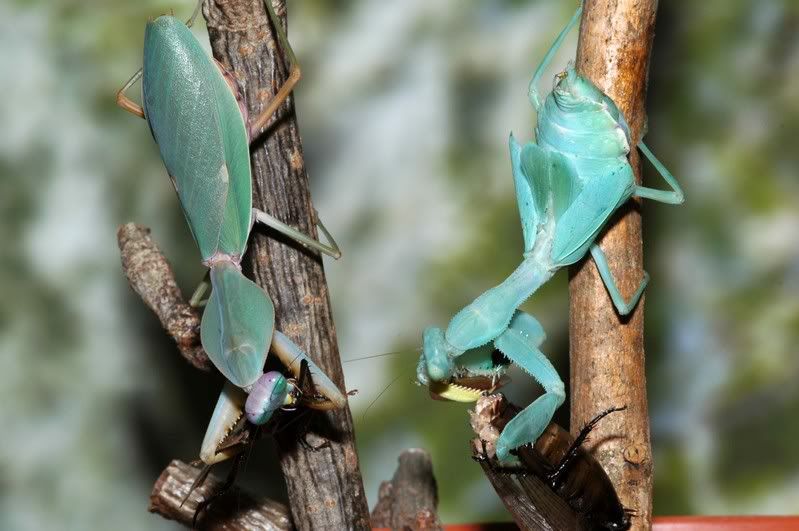Rob Byatt
Well-known member
I couldn't decide which thread to post this on, so I gave it one of its own :wink:
I guess it's an attempt to try to popularise C. humeralis (on the right ); all my other attempts (how aggressive it is, powerful, large etc.) haven't really taken root, so here it is compared next to Rhombodera sp., one of the largest and most popular mantids.......
); all my other attempts (how aggressive it is, powerful, large etc.) haven't really taken root, so here it is compared next to Rhombodera sp., one of the largest and most popular mantids.......



Admittedly, the Rhombodera sp. here is a little smaller than usual (80mm) and the C. humeralis is larger than normal (70mm), but this just makes the comparison of the relative proportions even more obvious.
Just look at the head of C. humeralis - it is so much broader.
The pronotum (excluding any projections) of C. humeralis is very much larger.
And then there are the forearms, here is the greatest difference between the two species. All segments of the forelegs are MUCH more heavily built in C. humeralis. It can therefore be implied that the musculature within the legs is more developed, indeed, the projection at the top edge of the femur on C. humeralis could be a structural adaptation to strengthen the leg when subjected to these proposed extra forces.
I could go on, but I think you all get the idea
ps. please don't spread these theories as being fact - they are purely my opinions
I guess it's an attempt to try to popularise C. humeralis (on the right



Admittedly, the Rhombodera sp. here is a little smaller than usual (80mm) and the C. humeralis is larger than normal (70mm), but this just makes the comparison of the relative proportions even more obvious.
Just look at the head of C. humeralis - it is so much broader.
The pronotum (excluding any projections) of C. humeralis is very much larger.
And then there are the forearms, here is the greatest difference between the two species. All segments of the forelegs are MUCH more heavily built in C. humeralis. It can therefore be implied that the musculature within the legs is more developed, indeed, the projection at the top edge of the femur on C. humeralis could be a structural adaptation to strengthen the leg when subjected to these proposed extra forces.
I could go on, but I think you all get the idea
ps. please don't spread these theories as being fact - they are purely my opinions













































